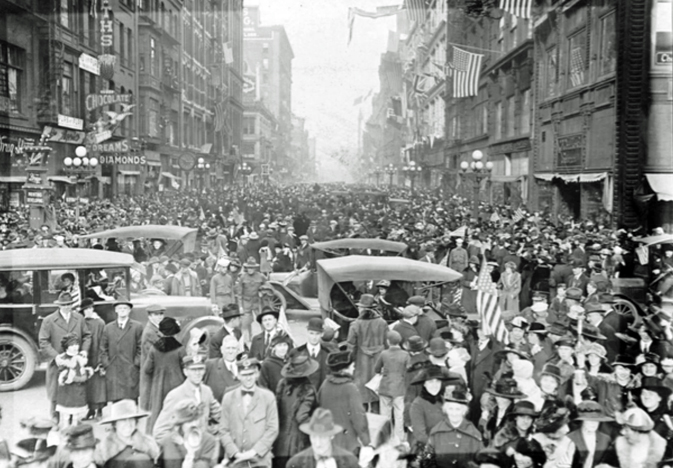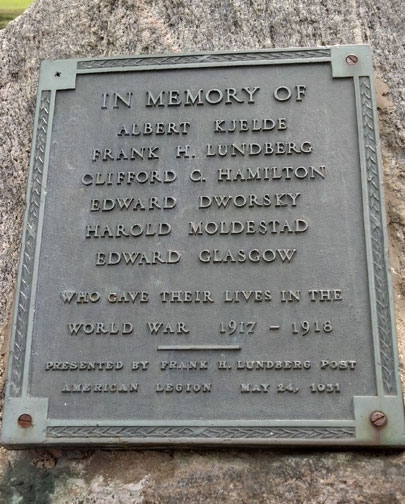Also see Park in Times of War
The U.S. declared war on Germany on April 6, 1917, entering World War I. Various reports indicate that either 114 or 150 Park citizens served in the Great War.
Minnesota contributed 123,325 men, and 1,430 of them died.
A story about the Liberty Loan (war bond) program in Minneapolis, by Leo J. Harris, can be found in the Winter 2012 issue of Hennepin History magazine.
THE RED CROSS
An August 4, 1918 item in the Minneapolis Morning Tribune reported that a group of St. Louis Park women, including some of its most prominent citizens, have won service stripes for their Red Cross work. The women sewed articles of clothing for refugees, including:
15 dozen day shirts
96 suits of underwear
80 suits of pajamas
three dozen bathrobes
two dozen helpless case shirts
50 dresses
20 boys waists
24 boys suits
40 underskirts
109 chemise
80 petticoats
239 pairs of socks
2,520 tampons
2,606 gauze dressings
The St. Louis Park branch of the Red Cross had units in Brookside and Oak Hill.
MOTHERS’ CLUB
A history of the Mothers’ Club/PTA of Lincoln School for 1918 includes: “Club helped arrange a home coming for the war boys.”
THOSE WHO DIED
On May 24, 1931, the Frank H. Lundberg Post of the American Legion placed a memorial plaque with the names of the men from St. Louis Park who died in the Great War:
Albert Kjelde
Frank H. Lundberg
Clifford C. Hamilton
Edward Dworsky
Harold Moldestad
Edward Glasgow
This plaque, along with a similar plaque honoring those who died in World War II, is on a rock placed near the Veteran’s Memorial Amphitheater in Wolfe Park.
HAROLD R. RYAN
Another name to remember is Harold R. Ryan, who was wounded in the war and returned to his brother William’s home on the North Side of St. Louis Park in 1920. Ryan was one of the first American soldiers to step on French soil and was cited for bravery several times, receiving the croix de guerre. He was wounded by shrapnel and suffered the effects of gas, and was in and out of hospitals since the war. He died in June 1926, at the army base hospital in Minneapolis. (Hennepin County Review, June 24, 1926)
VICTORY
Mary T. Hill, of the James J. Hill family, recorded in her diary,
A glorious morning….At 5 a.m. we heard whistles and bells. Later Campbell telephoned and learned the Germans had signed the Armistice and that fighting ceased at 11 a.m., 5 a.m. here – after breakfast I went to town all was Bedlam, called celebrating. Such noise! No music! The majority in the streets, no thought of influenza infection. Thank God for Peace.


